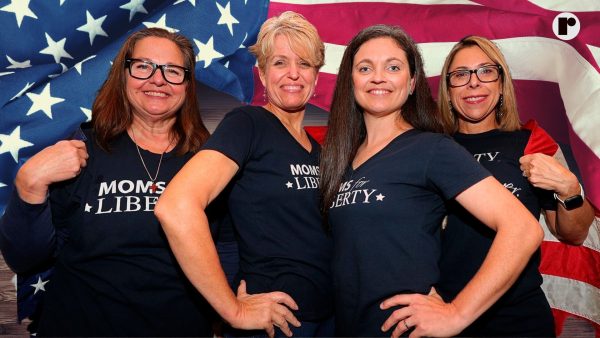NHS revises its dress code
Last year, in October, Medeea Ionescu and the Young Feminists, proposed a dress code policy change to the board. After meeting with Mr. Jefferey Litke, who is a standing member on the Board of Education and is in the running for representative of the 70th House District, The Young Feminists teamed up with members of Diversify, GSA and the Black Student Union at a meeting with the board to share their thoughts before the votes.
After months of waiting, the new school year has brought new dress code policies for our high school; non-discriminatory, as well as ungendered and embracing of all cultures as well as students’ attire being up to the parents and themselves rather than the district.
One argument against the previous dress code was telling a girl to cover up,which can be seen as sexist coming from a teacher in a high school. It makes students, who are children, feel self-conscious about their own bodies, especially when it’s coming from an adult in a superior position to them. A girl’s body is not harmful to the environment and the board agrees that a girl’s body should never be seen as a disruption to a boy’s education.
“The new dress-code policy will definitely make positive changes throughout the school. It has already become evident that students have felt more comfortable knowing that they can express themselves any way that they choose without the fear of being penalized for it. Additionally, it’s been making it easier for students to follow and know the consequences due to the fact that the new policy essentially forces teachers to enforce the dress code the same across the board,” said Medeea Ionescu, the YF director.
About the previous policy, she says, “I believe that the old dress code was outdated, and it definitely held sexist, and even racist, undertones. It was heavy on the fact that a student’s respect and character were measured by the way they dress. I personally believe this is dehumanizing. A person’s character and accomplishments can never be measured by the way they choose to express themselves fashion-wise.”
“I personally have not been affected by the old dress code policy. However, I had a friend, who happened to be curvier, that got dress-coded despite the fact that they wore the same thing as me at times. This was a trend across the school, where curvier women got dress-coded more often.
In regard to the new dress code, I have noticed that I have been more confident in the things that I wear. I have loved being able to wear ripped jeans and crop tops without the fear of getting dress coded. These feelings have been shared by many of my peers as well.”
While NHS has made strides in evening out the way we see our students, many districts continue to struggle with this issue. Dress codes have hounded public schools since the late sixties.
“The first school dress code law was established in 1969 by the U.S. Supreme Court. The case, known as Tinker vs. Des Moines Independent School District, involved several high school students who wore black armbands to school in a planned protest against the Vietnam War,” according to FindLaw’s team of legal writers and editors in June of 2016.
In an article by ACLU.org, about the landmark amendment Tinker vs. Des Moines, we learn, “Mary Beth Tinker was a 13-year-old junior high school student in December 1965 when she and a group of students decided to wear black armbands to school to protest the war in Vietnam. The school board got wind of the protest and passed a preemptive ban. When Mary Beth arrived at school on Dec. 16, she was asked to remove the armband and was then suspended.
Four other students were suspended as well, including her brother John Tinker and Chris Eckhardt. The students were told they could not return to school until they agreed to remove their armbands. The students returned after the Christmas break without armbands, but in protest, they wore black clothing for the remainder of the school year — and filed a First Amendment lawsuit,” the article continued. Along with the photo to the right, ACLU.org also linked a YouTube video “A Supreme Court Milestone for Students’ Free Speech Rights”: https://youtu.be/go63SCNT6OQ
lawsuit,” the article continued. Along with the photo to the right, ACLU.org also linked a YouTube video “A Supreme Court Milestone for Students’ Free Speech Rights”: https://youtu.be/go63SCNT6OQ
Since 1969, students’ self-expression has been repressed. Dress code policies which have, and will, continue to, enforce ‘no vulgarities, clothing that depicts lewd, sexually explicit, or indecent drug use, gang-related graphics, and no weapons’ are rather ethical. On the other hand, some other policies are not only misogynistic but can also interfere with freedom of religion.
More of these unethical policies have been seasonal clothing restrictions, such as limits on midriffs and lower backs not being exposed in hot weather, all of which can make young girls self-conscious and uncomfortable in their own skin.
These policies start when a child enters kindergarten, the first year of grade school where they learn how to count to 100 and learn vowels. Children learn opinions, beliefs, and habits from their families…How can 4 and 5 year old children be guilty for public order offenses?
Overall, the impact dress codes have on mental health is severe, more often than not leading to self-esteem issues and body dysmorphia amongst adolescents. An activist website, ThisIsGendered.org said, “The fear that girls in revealing clothes will cause sexual tension or provoke unwanted attention, tells us that there is still a lot of (hyper)sexualisation, objectification and shaming of women’s bodies to unlearn.”
As the rest of the country figures it out, the students at NHS will express themselves.

I am a Senior. I took Journalism because I enjoy writing, editing, and sharing reliable information with others. I plan to attend a 4 year college and...












